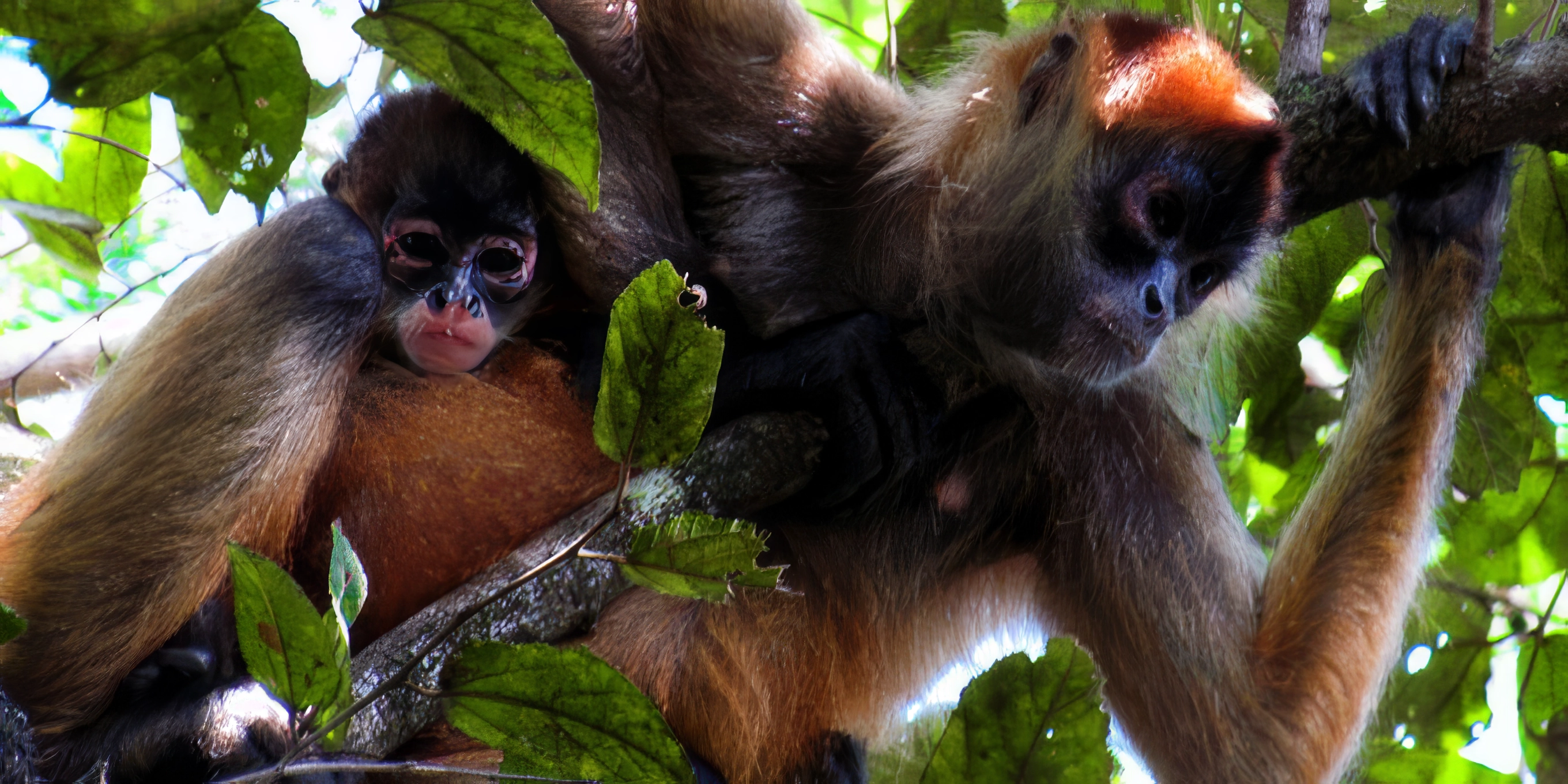
Monkeys of Costa Rica: A Primate Paradise
Costa Rica, embraced by its verdant rainforests, teeming ecosystems, and profuse wildlife, stands as a haven for primates. Amidst the multitude of creatures inhabiting this Central American jewel, monkeys emerge as the stars of the show. Within this extensive guide, we'll embark on an exploration of Costa Rica's monkey realm, delving into their diverse species, captivating behaviors, natural habitats, and the prime locations to catch glimpses of these agile primates gracefully navigating the jungle canopy.
The Monkey Species of Costa Rica
Costa Rica hosts four distinct species of monkeys, each with its unique traits and charm:

Howler Monkeys (Alouatta spp.):
- Recognized by their vocal prowess, howler monkeys are often heard before they're seen. They produce some of the loudest sounds in the animal kingdom.
- Where to Find Them: Howler monkeys can be encountered throughout Costa Rica, particularly in the lowland rainforests of Guanacaste, Manuel Antonio, Arenal, and Monteverde.

Capuchin Monkeys (Cebus capucinus):
- Capuchin monkeys are known for their expressive faces and prehensile tails, which they use for balance and gripping.
- Where to Find Them: These lively monkeys are widespread and can be spotted in various national parks, including Manuel Antonio and Corcovado.

Spider Monkeys (Ateles geoffroyi):
- With their long limbs and prehensile tails, spider monkeys are acrobats of the treetops, gracefully swinging from branch to branch.
- Where to Find Them: Spider monkeys thrive in protected areas like Corcovado National Park and Tortuguero National Park.

Squirrel Monkeys (Saimiri oerstedii):
- Squirrel monkeys are among the smallest primates in Costa Rica, boasting distinct white faces and large eyes.
- Where to Find Them: These social monkeys are commonly found in Manuel Antonio National Park and the Central Pacific region.
Monkey Behavior and Social Structures
Monkeys are renowned for their complex social structures and behaviors. Here's a glimpse into their fascinating world:
- Social Bonds: Monkeys in Costa Rica often live in groups, which vary in size depending on the species. These groups may consist of close-knit families or larger troops.
- Communication: Monkeys employ a range of vocalizations, gestures, and facial expressions to communicate. Howler monkeys are famous for their deafening roars, while capuchins exhibit intricate grooming rituals.
- Diet: Their diets primarily comprise fruits, leaves, insects, and sometimes small vertebrates. Monkeys play a vital role in seed dispersal, contributing to the rainforest's ecosystem.
- Parenting: Female monkeys usually take on the responsibility of caring for and nurturing the young. Young monkeys are playful and curious, learning essential life skills through playful interactions.

Where to Encounter Monkeys in Costa Rica
Costa Rica offers numerous opportunities to observe monkeys in their natural habitat. Here are some of the best places for monkey sightings:
-
Manuel Antonio National Park: This park is renowned for its abundant wildlife, including howler, capuchin, and squirrel monkeys. The park's well-maintained trails provide excellent viewing opportunities.
-
Corcovado National Park: As one of the most biodiverse places on Earth, Corcovado is home to all four monkey species found in Costa Rica. Guided hikes offer a chance to spot these primates.
-
Tortuguero National Park: Explore the waterways of Tortuguero to witness howler and spider monkeys in the canopy, along with other exotic wildlife.
-
Arenal Volcano National Park: Howler monkeys are commonly seen here, and you can combine monkey watching with volcano exploration.
-
Guanacaste: Howler monkeys frequent many beach areas in Guanacaste. With the smaller leaves of the tropical dry forest, howler monkeys are often easy to find.
Responsible Monkey Watching
When observing monkeys in Costa Rica, it's essential to prioritize their well-being and minimize your impact on their natural habitat:
- Keep a respectful distance and never attempt to touch or feed wild monkeys.
- Refrain from making loud noises or sudden movements that could distress them.
- Dispose of trash responsibly, as litter can harm both monkeys and their environment.
- Follow the guidance of trained naturalist guides, who can enhance your experience while ensuring the monkeys' safety.
In Costa Rica's enchanting rainforests, the sight of monkeys swinging gracefully through the trees is a captivating experience. As you embark on your primate adventure, remember that by respecting these remarkable creatures and their ecosystems, you contribute to the conservation of this primate paradise.